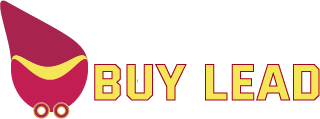Here’s how you can create modular content that can increase traffic:Set clear goals for your modular content marketing by identifying the right audience, determining the message you want to convey, and how you want to reach your audience Set Clear Goals.
Create buyer personas to understand what type of content your target audience prefers. Also, create a blueprint of your strategy that defines how many modular content pieces will be needed in a particular content type.Image source: AWeber
Set Expiration Periods for Content
It is very important to plan in advance how phone number database long your modular content will be relevant and useful to readers.
Evaluate the relevance of your content, potential updates, adaptability, and expected performance of your modular content to ensure that the pieces of your content remain important to readers.
For example, the shelf life of content with statistics is limited and relevant for a certain period.
In contrast, an evergreen service page that requires little updating and tweaking has a longer lifespan and remains relevant to readers for a long time.
Conducting a Content Audit
Create a modular content inventory by auditing your existing content and identifying pieces of content that can be modularized. This can be any piece of content, including paragraphs, images, videos, statistics, or infographics, that is relevant as an individual piece of content and can be reused with other content.
Each module should have a purpose and add value to the overall content.
Establish a clear design, message tone, visual google releases three new ad creation tools style, and module length to ensure the audience resonates with your modular content and fits in with the rest of the content offering the best user experience.
Define Modular Components
Once you have identified key topics, consider how each can stand alone as a self-contained unit of information. Break these topics down and turn them into modular components.
For example, if you have a blog post about “ 10 Tips for Healthy Eating ,” each tip could be a modular component.
Create a Clear Title Set Clear Goals
Provide a clear and descriptive title for each modular component.
These headings should accurately represent the content within the module and make it easy for readers to navigate through the blog post.
Add Transition
Make sure there is a smooth transition between each modular component.
Consider adding transition sentences or paragraphs to connect ideas and maintain coherence throughout the blog post.
Add Visual Elements
Include visual elements such as images, infographics, or videos that enhance the understanding and engagement of each modular component. Visuals can make content more engaging and help break text into digestible chunks.
Consider Cross Links
If you have blog posts or other related content on your website, consider creating cross-links within modular components . This can encourage readers to explore more of your content and establish connections between different pieces.
Best Practices for Creating Modular Content
Here are the best practices you should follow to create modular content:
Divide Your Content Into Sections
Identify the right method to divide your content into distinct yet coherent sections. Make sure the content you share is reusable, well-structured, and aligned with your brand goals.
To break up your content effectively, start by analyzing your content structure and identifying natural divisions within it.
Next, create tags or labels that revolve around a particular concept or theme.
This allows for easier organization and retrieval of related modules. To improve your content search and management capabilities, assign relevant keywords, topics, and metadata to each module.
This helps in categorizing and tagging content appropriately, making it easier for your audience to find. By following these steps, you can effectively break down your content into modular pieces that offer flexibility and maximize their potential for reuse.
Create a Content Library Set Clear Goals
Create a modular content library to improve your content creation, personalization, and distribution process. This helps streamline your content creation process.
Start by organizing your content library into different categories that align with topics, formats, target audiences, and themes. This categorization helps in finding and retrieving content modules efficiently when needed.
Ensure consistent use of meta tags and meta descriptions for each module, tailoring them to the specific category they belong to. This helps improve searchability and makes it easier for users to find relevant content within the library.
Leverage the knowledge and expertise of your team members to create a comprehensive, modular content library.
Each team member can provide their bulk lead unique insights, ensuring a diverse range of modules that cater to a variety of audience interests and preferences. Keep records of all revisions, versions, and updates to your content modules.
Encourage users to provide feedback and reviews on your content library. By actively seeking input from your audience, you gain valuable insights that can help refine and improve your content strategy Set Clear Goals.
